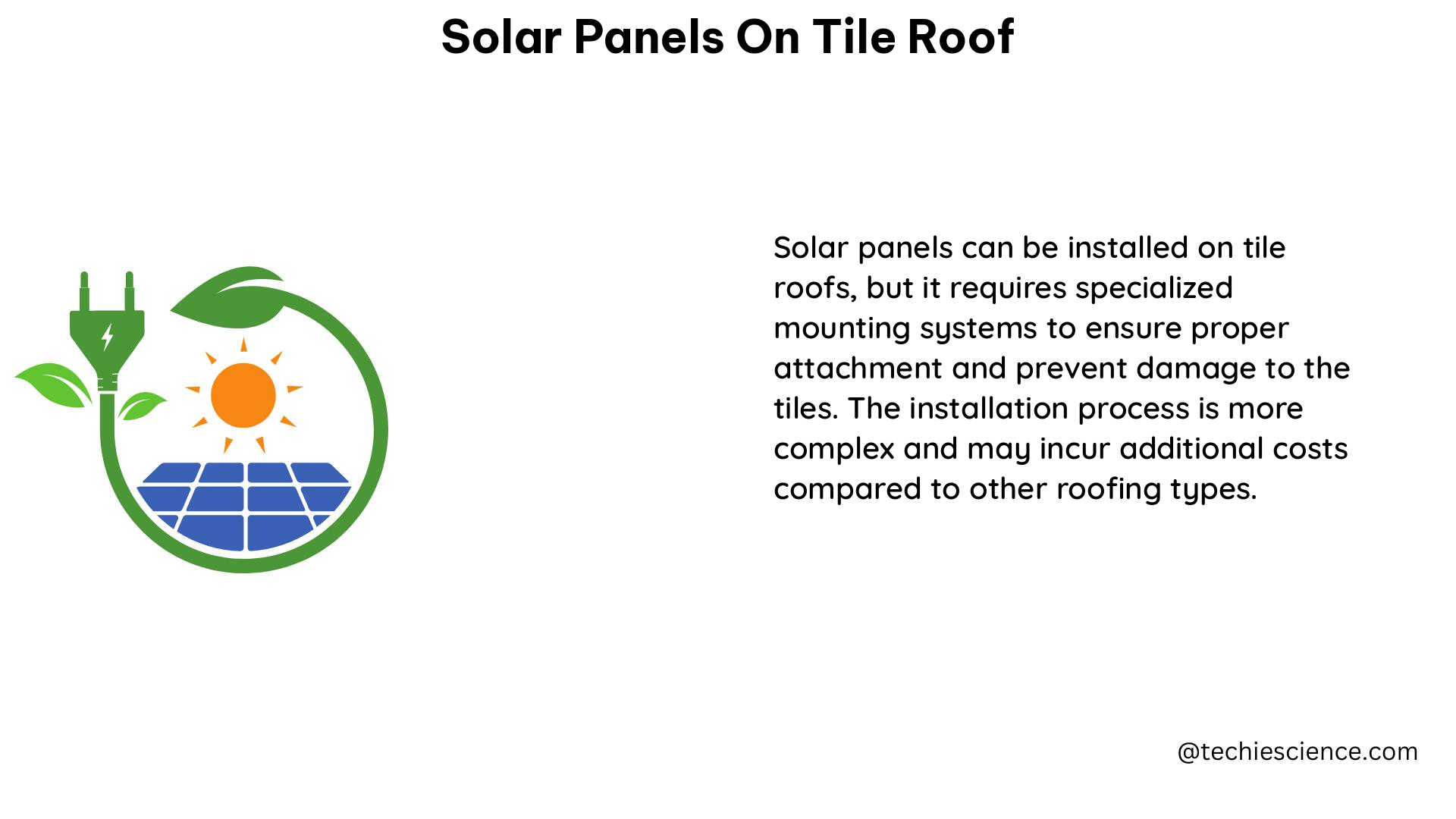Installing solar panels on a tile roof can be a complex process, but with the right approach, it can be a highly effective way to harness renewable energy and reduce your carbon footprint. In this comprehensive guide, we’ll explore the ins and outs of solar panel installation on tile roofs, covering everything from the recommended techniques to the benefits and considerations.
Understanding the Inset Solar Installation Process
The most recommended technique for installing solar panels on a lightweight tile roof is called an “inset solar installation” or a “comp-out.” This process involves the following steps:
- Tile Removal: The existing tile roof is removed from the area where the solar array will be installed.
- Composite Shingle Placement: New composite shingles are laid in the area where the tiles were removed.
- Flashing and Sealing: The composite shingles are reinforced with sheet metal called flashing and sealed to ensure the roof is completely waterproof.
- Solar Panel Installation: The solar panels are installed onto the composite shingles.
- Tile Replacement: The area around the solar array is filled in with the previously removed tiles, creating a seamless and aesthetically pleasing appearance.
By using this inset solar installation method, homeowners can maintain the aesthetic appeal of their tile roof while still benefiting from the advantages of solar power.
Benefits of Inset Solar Installations on Tile Roofs

Inset solar installations on tile roofs offer several key benefits:
- Eligibility for Solar Investment Tax Credit: Inset solar installations are eligible for the Solar Investment Tax Credit, which can provide significant financial incentives for homeowners.
- Low-Profile Design: The inset installation method results in a low-profile solar array that is often used in new home designs, providing a sleek and modern appearance.
- Tile Preservation: Homeowners can keep the extra tiles that are removed from their roof for future projects or repairs, reducing waste and maintaining the integrity of their tile roof.
- Energy Savings and Home Value Increase: Installing solar panels on a tile roof can save homeowners thousands of dollars in energy bills and increase the value of their home.
- Reduced Carbon Footprint: By harnessing renewable solar energy, homeowners can significantly reduce their overall carbon footprint and contribute to a more sustainable future.
Compatibility and Considerations
While most types of roofing, including asphalt shingles, tile roofs, and metal roofs, are compatible with solar panels, there are some exceptions. Wood and slate roofs are generally not suitable for solar panel installation due to their brittle material and fire hazard.
When considering solar panel installation on a tile roof, it’s important to take into account the following factors:
- Roof Condition: The tile roof must be in good condition and able to support the weight of the solar panels and associated hardware.
- Roof Pitch: The roof pitch should be between 15 and 40 degrees for optimal solar panel performance.
- Shading: Any shading from nearby trees, buildings, or other structures should be minimal to ensure maximum solar energy production.
- Roof Orientation: The roof should be oriented towards the south (in the Northern Hemisphere) or the north (in the Southern Hemisphere) for the best solar exposure.
- Local Regulations: Homeowners should check with their local authorities to ensure that their solar panel installation complies with all relevant building codes and zoning regulations.
Working with a Professional Solar Installer
To ensure a successful and seamless solar panel installation on a tile roof, it’s highly recommended to work with a professional solar installer. These experts have the necessary experience, knowledge, and equipment to navigate the complexities of tile roof solar installations.
When selecting a solar installer, homeowners should consider the following:
- License and Certification: Ensure the installer is licensed and certified to work on tile roofs and solar panel installations.
- Experience: Look for an installer with a proven track record of successful tile roof solar projects.
- Warranty and Guarantees: Inquire about the warranties and guarantees offered on the solar panels, inverters, and installation work.
- Customer Reviews: Check online reviews and testimonials from previous customers to gauge the installer’s quality of work and customer service.
By working with a professional solar installer, homeowners can have peace of mind knowing that their tile roof solar installation will be done correctly and efficiently.
Conclusion
Installing solar panels on a tile roof can be a highly effective way to harness renewable energy and reduce your carbon footprint. By understanding the inset solar installation process, the benefits, and the key considerations, homeowners can make an informed decision about whether this solution is right for their home.
Remember, working with a professional solar installer is crucial to ensure a successful and seamless tile roof solar installation. With the right approach, homeowners can enjoy the long-term benefits of solar power while maintaining the aesthetic appeal of their tile roof.
References:
- Can You Install Solar Panels on Tile Roofs?
- Tile Roofs and Solar Panels: What You Need to Know
- How to Do a Residential Solar Site Survey: A Full Guide

The lambdageeks.com Core SME Team is a group of experienced subject matter experts from diverse scientific and technical fields including Physics, Chemistry, Technology,Electronics & Electrical Engineering, Automotive, Mechanical Engineering. Our team collaborates to create high-quality, well-researched articles on a wide range of science and technology topics for the lambdageeks.com website.
All Our Senior SME are having more than 7 Years of experience in the respective fields . They are either Working Industry Professionals or assocaited With different Universities. Refer Our Authors Page to get to know About our Core SMEs.